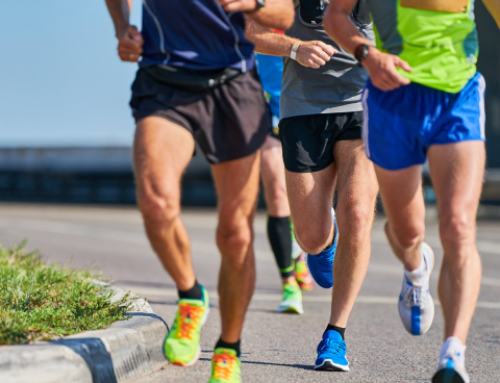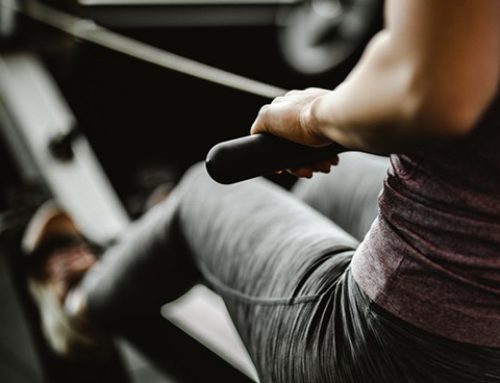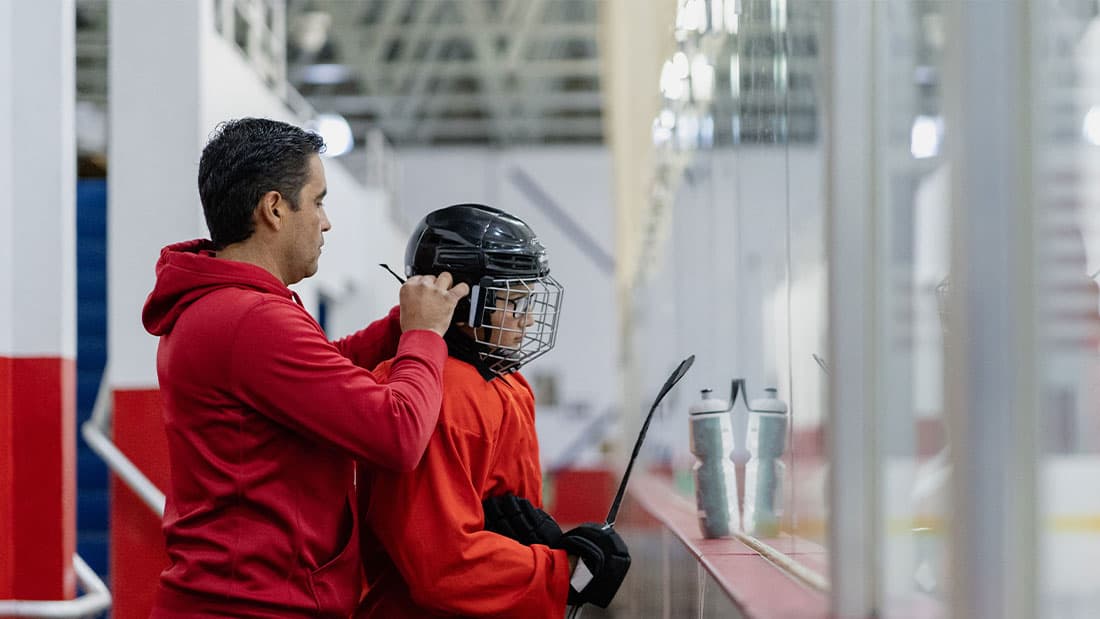How To Improve your Cross Country Race Times
Thousands of sports are competed in and celebrated around the world. With modern inventions, more and more ways to compete against another are invented daily. If you haven’t seen it before, I will encourage you to search ESPN 8 on the internet. In an ode to the movie Dodgeball, every August 8th, ESPN airs some of the most unique sports you will ever see. Cup stacking, medieval-style sword fights, human chicken fighting, airplane racing, corn hole championships, you name it, it’s out there. While many people can appreciate various types of competition, it’s safe to say some competition ideas are a little out there.
Of course, many older sports use minimal to no equipment. Then there are some as old as competition itself. To me, there’s no more “primal” form of competition than running a race. If you grew up with two healthy legs, you probably ran many races as a kid. You raced against siblings, friends, schoolmates, teammates, and your friend’s car as they drove away. It is natural for children to want to race against each other. It is ingrained in our very DNA. It is our oldest and most widely celebrated form of competition.
However, as we grow older, some of us grow tired of it and stop racing. Others never let it go and dedicate all their athletic efforts to running faster and farther. It is often evident that some people are naturally faster than others. They gracefully and almost effortlessly glide up a hill or down a street. Then, some run as if they’re dragging their pet dog on one foot. They run with all their effort and train vigorously but can never seemingly run as fast as the smooth runners. Well, as it turns out, there’s something to that.
Running cross country (and all other competitive distance running) is an interesting sport. It is a purely objective sport. There are no judges, style points, or a defense to worry about. Run from point A to point B. Whoever does it the fastest is the winner. There is virtually never a debate over who the winner is and who is the best at it. Can’t be simpler than that! What is more fascinating about the sport is that, even at it’s elite levels, all the athletes are in pretty much the same shape. The difference between first and tenth place, even second place, is about technique and what is called running economy.
The Economics of Running
Running economy refers to the energy required to propel the body a certain distance. If runner A can launch his body 4 feet in a stride, and runner B can only propel 3 feet with the same amount of effort, runner B is going to have a very difficult time winning a race against runner A.
How Does A Cross Country Runner Get Faster?
The answer is the cliche saying of working smarter, not harder. Any competitive runner knows that running more is often nearly impossible and will probably do more harm than good. The best way to get an edge in improving technique. There is a ceiling to how great of cardiovascular shape you can be in, but the technique can always be improved. The technique can give us the best bang for our buck to improve running times.
The best way to improve the running economy is to spend less time on the ground and more in the air. Increasing air time means the athlete is utilizing a more powerful stride. Therefore, we can make a strong case that all runners should maximize their power. They should quickly strike the ground and just as quickly propel themselves forward. A slow runner will slowly land and slowly launch into the air, spending way too much foot time on the ground—this type of running leads to maximum efforts and slow times.
Runners Are Athletes, Train Like It!
Probably the biggest problem with training for runners is that they often don’t train like the athletes that they are. Most running training protocols involve nothing but running! That shouldn’t be! Runners should be lifting weights, doing plyometrics, running sprints, and doing mobility work. A powerful athlete will absorb and quickly create force to maximize a stride with the least amount of effort. You cannot develop those results by running more. Intentional training outside of running must be done to develop the strength and power to improve the running economy.
Cross country is an endurance sport, which requires a lot of time. Training to improve running economy should be as efficient as possible. Squats, lunges, hip hinges, sprints, and various plyometrics will all provide a good bang for your buck to improve running efficiency. Other exercises like bench presses and bicep curls aren’t going to provide as much help, as they aren’t all that relevant to gait cycle efficiency. The stronger and more powerful you become with movements relevant to the gait cycle, the faster runner you will likely become.
The Weight Room Isn’t Just For Football Players.
Even if you compete in pool chicken fighting, every sport can benefit from weightlifting and plyometric training. The stigma that training for strength and power isn’t that important for runners is flat out wrong. So, if you want to become a better runner, quit running more and more. Get the most bang for your stride by learning to properly squat, lunge, jump, sprint, and become better at those activities. Your running technique will probably improve, your stride will probably lengthen with less foot time on the ground, and your times will drop without even trying.
RECOMMENDED FOR YOU
MOST POPULAR
How To Improve your Cross Country Race Times
Thousands of sports are competed in and celebrated around the world. With modern inventions, more and more ways to compete against another are invented daily. If you haven’t seen it before, I will encourage you to search ESPN 8 on the internet. In an ode to the movie Dodgeball, every August 8th, ESPN airs some of the most unique sports you will ever see. Cup stacking, medieval-style sword fights, human chicken fighting, airplane racing, corn hole championships, you name it, it’s out there. While many people can appreciate various types of competition, it’s safe to say some competition ideas are a little out there.
Of course, many older sports use minimal to no equipment. Then there are some as old as competition itself. To me, there’s no more “primal” form of competition than running a race. If you grew up with two healthy legs, you probably ran many races as a kid. You raced against siblings, friends, schoolmates, teammates, and your friend’s car as they drove away. It is natural for children to want to race against each other. It is ingrained in our very DNA. It is our oldest and most widely celebrated form of competition.
However, as we grow older, some of us grow tired of it and stop racing. Others never let it go and dedicate all their athletic efforts to running faster and farther. It is often evident that some people are naturally faster than others. They gracefully and almost effortlessly glide up a hill or down a street. Then, some run as if they’re dragging their pet dog on one foot. They run with all their effort and train vigorously but can never seemingly run as fast as the smooth runners. Well, as it turns out, there’s something to that.
Running cross country (and all other competitive distance running) is an interesting sport. It is a purely objective sport. There are no judges, style points, or a defense to worry about. Run from point A to point B. Whoever does it the fastest is the winner. There is virtually never a debate over who the winner is and who is the best at it. Can’t be simpler than that! What is more fascinating about the sport is that, even at it’s elite levels, all the athletes are in pretty much the same shape. The difference between first and tenth place, even second place, is about technique and what is called running economy.
The Economics of Running
Running economy refers to the energy required to propel the body a certain distance. If runner A can launch his body 4 feet in a stride, and runner B can only propel 3 feet with the same amount of effort, runner B is going to have a very difficult time winning a race against runner A.
How Does A Cross Country Runner Get Faster?
The answer is the cliche saying of working smarter, not harder. Any competitive runner knows that running more is often nearly impossible and will probably do more harm than good. The best way to get an edge in improving technique. There is a ceiling to how great of cardiovascular shape you can be in, but the technique can always be improved. The technique can give us the best bang for our buck to improve running times.
The best way to improve the running economy is to spend less time on the ground and more in the air. Increasing air time means the athlete is utilizing a more powerful stride. Therefore, we can make a strong case that all runners should maximize their power. They should quickly strike the ground and just as quickly propel themselves forward. A slow runner will slowly land and slowly launch into the air, spending way too much foot time on the ground—this type of running leads to maximum efforts and slow times.
Runners Are Athletes, Train Like It!
Probably the biggest problem with training for runners is that they often don’t train like the athletes that they are. Most running training protocols involve nothing but running! That shouldn’t be! Runners should be lifting weights, doing plyometrics, running sprints, and doing mobility work. A powerful athlete will absorb and quickly create force to maximize a stride with the least amount of effort. You cannot develop those results by running more. Intentional training outside of running must be done to develop the strength and power to improve the running economy.
Cross country is an endurance sport, which requires a lot of time. Training to improve running economy should be as efficient as possible. Squats, lunges, hip hinges, sprints, and various plyometrics will all provide a good bang for your buck to improve running efficiency. Other exercises like bench presses and bicep curls aren’t going to provide as much help, as they aren’t all that relevant to gait cycle efficiency. The stronger and more powerful you become with movements relevant to the gait cycle, the faster runner you will likely become.
The Weight Room Isn’t Just For Football Players.
Even if you compete in pool chicken fighting, every sport can benefit from weightlifting and plyometric training. The stigma that training for strength and power isn’t that important for runners is flat out wrong. So, if you want to become a better runner, quit running more and more. Get the most bang for your stride by learning to properly squat, lunge, jump, sprint, and become better at those activities. Your running technique will probably improve, your stride will probably lengthen with less foot time on the ground, and your times will drop without even trying.










